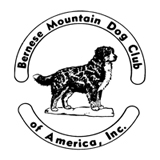
The Berner-Garde Foundation was established to assist in efforts to improve the health of Bernese Mountain Dogs. The BGF is comprised of a voluntary Board of Directors and other workers. Our efforts are designed to support scientific research into the causes and cures for genetic diseases and general health of our beloved Berners.
Important Information when looking for a breeder:
Responsible breeders use several health tests to screen potential dogs for genetic health problems prior to breeding. Wise buyers will confirm the screening certifications prior to purchasing a pup. The major tests are described below.
-
Canine Health Information Center (CHIC) - CHIC and the Bernese Mountain Dog Club of America have specified five necessary health tests for breeding Bernese Mountain Dogs: CHIC works with parent breed clubs to identify health screening protocols appropriate for individual breeds, A dog issued a CHIC number means that the dog was tested for the recommended tests but does NOT mean the dog passed all the tests. The results are available on the OFA website or Berner Garde.
-
1. Hips: Hip X-rays are taken when the dog is two yrs old and sent to the Orthopedic Foundation for Animals (OFA) for evaluation. Dogs that pass are issued a hip number which means they do not have hip dysplasia. Dogs are graded Fair, Good, and Excellent which are just grades of normal or passing hips.
-
2. Elbows: Elbow X-rays are taken when the dog is two yrs old and sent to the OFA for evaluation. Dogs that pass are normal and are issued an elbow number. Both parents and all four grandparents of any litter should have both hip and elbow numbers.
-
3. Eyes: Eye examinations by a veterinary ophthalmologists look for heritable eye problems. Results are sent to the Canine Eye Registry Foundation (CERF) or through the OFA.
-
4. von Willebrand (vWD): The vWD test is a DNA test from VetGen or Gensol that looks for a blood clotting disorder. 16% of Berners are carriers of the gene for this disease and 1% are affected. Ideally, breeding dogs should be completely free of the VWD gene, however a carrier may be bred to a clear and no affected puppies will be born.
-
5. Heart: Cardiac examinations look primarily for subaortic stenosis (SAS). SAS is a known problem in Berners but more data is needed to establish how significant. Berners with SAS should not be bred.
Additional Health Screenings
-
Degenerative Myelopathy (DM): Degenerative Myelopathy is a progressive incurable disease of the spinal cord that results in paralysis. Data has shown that DM may be a growing problem in Bernese. Therefore, the better breeders choose to screen for it using the DNA test. There are 2 genes that can cause DM in berners, SOD 1A and SOD 1B. Dogs can be clear, carrier, or at risk. At Risk dogs carry 2 genes for DM and are 20% more likely to get DM when they get older. A dog can also be a carrier for each gene causing them to be at risk for DM.
-
Shoulder Osteochondrosis (OCD): OCD of the shoulder is more prevalent in large breeds and is thought to be inherited but is not unique to Berners. The OFA evaluates X-rays for this condition and some Bernese breeders include this in their screenings.
-
Thyroid: Thyroid testing is done to make sure dogs do not pass on the gene for autoimmune thyroiditis which results in Hypothyroidism.
Health Certification Databases
-
The databases below are available for free to anyone. They are used by breeders and puppy buyers to evaluate breeding quality. To look up a dog you will generally need their AKC registration number or registered name.
-
Bernergarde: The Bernergarde is a Berner specific database of health reports and other valuable date including some of the health screening results listed above.
-
Orthopedic Foundation for Animals (OFA): The OFA is allied with CHIC and the AKC in providing a broad database of health screening results for all breeds.
-
The above text was adapted from an article written by Philip Shaffer on the Bernese Mountain Dog Club of the Rockies Website
View on Crossbreeding/ Bernedoodles/ Mongreals:
The Bernese Mountain Dog Club is dedicated to the health and welfare of the Bernese Mountain Dog breed while conserving the original breed function - that of a "working dog." A purebred dog offers to his owner the likelihood that he will be a specific size, shape, color and temperament. The predictability of a breed comes from selection for traits that are desirable and away from traits that are undesirable. When a breed standard or type is set, the animals within that breed have less heterozygosity than do animals in a random population.
A Bernerdoodle is nothing more than an expensive mongrel. Because the genetic makeup is diverse from the Poodle genes and the Bernese Mountain Dog genes, the resultant first generation (F1) offspring is a complete genetic gamble. The dog that results from cross-breeding may be any size, color, coat texture and temperament. Indeed, Bernerdoodles do shed. Behavior varies with the dog and within a litter with some puppies that are poodle-like in attitude and others somewhat like the Bernese Mountain Dog.
The Bernese Mountain Dog Club, Inc. is opposed to cross-breeding of dogs and is particularly opposed to the deliberate crossing of Bernese Mountain Dogs with any other breed. These crossbreds are a deliberate attempt to mislead the public with the idea that there is an advantage to these designer dogs. The crossbred dogs are prone to all the genetic disease of both breeds and offer none of the advantages that owning a purebred dog has to offer.
The above is a derivative of the Labrador Retriever Club statement. Permission to amend was granted to the Bernese Mountain Dog Club of America by:
Frances O. Smith DVM, Ph.D.
LRC, Inc. Board of Directors
Diplomate American College of Theriogenology
Original Author of Labradoodle Statement
October 2017





